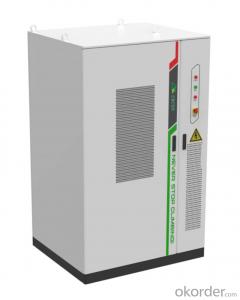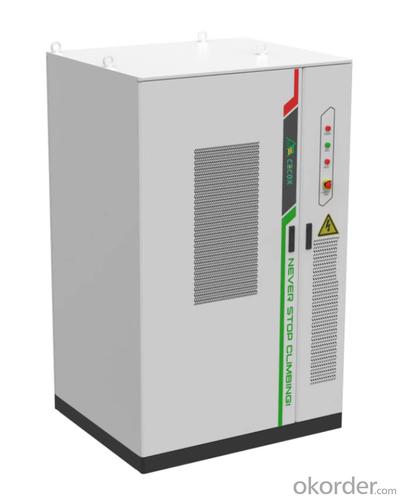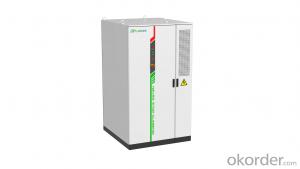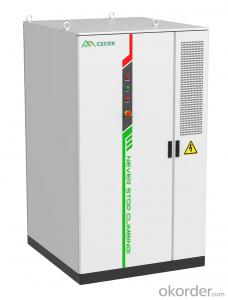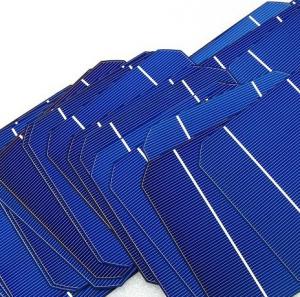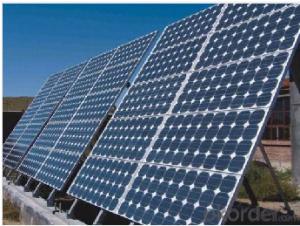See Through Solar Cells 100kw215kwh 672~876v 280ah Efficient and Smart Air-Cooling Cabinet Commercial/Industrial Storage
- Loading Port:
- SHANGHAI
- Payment Terms:
- TT OR LC
- Min Order Qty:
- 5 unit
- Supply Capability:
- 200 unit/month
OKorder Service Pledge
OKorder Financial Service
You Might Also Like
Specification
Product Features
Ultimate Safety
Partition security isolation design
Highly automated CCS integrated design
Electrical multidimensional fusion perception
Three-level relay protection design
Smart and Efficient
Panoramic online monitoring and scheduling
PACK level intelligent thermal management
Cold and hot cycle isolation design, up to 90% overall efficiency
BMS active balancing extends system life by 20%
Digital smart EMS system
Flexible and Convenient
Modular design, standardized interface
Multi-sensor and intelligent control system
Flexible expansion, multiple machines in parallel, 1.7m² single cabinet footprint
Triple level modular PCS, up to 99% maximum efficiency
Embedded air conditioning design
Quick Response
Access to cloud platforms, supporting multi-device access and multi-user sharing
Millisecond response to power dispatch
100% pre-installed integration
Support direct photovoltaic access
Equipped with LVRT, HVRT functions, and various control modes such as PQ, VF, and networking
Commercial & Industrial Battery
Product Parameters
Battery Type :LFP-280Ah
System Configuration:15*1P16S
Rated Charge/Discharge Ratio:≤0.5P
Rated Capacity:215Kwh
DC Rated Voltage:768V
DC Voltage Range:672 ~ 876V
AC Rated Power:100kW
AC Rated Voltage:400V±15%
Rated Grid Frequency:50Hz/60Hz
Cooling Mode:Efficient and Smart Air-Cooling
Size(W*D*H):1435*1215*2320mm&1700*1215*2320mm
Weight:2.5t/2.7t
Relative Humidity Range:5% ~ 95%(Non condensation)IP55
Operating Altitude:≤2000m(>2000m Reduction)
Fire Protection System:Aerosol/Perfluoro
Communication Interfaces:CAN/RS485/Ethernet
PV Direct Access,Seamless Switching of Parallel/Off-network
- Q: Does the solar cell generate electricity in the absence of the sun, only in the case of strong lights or lasers? If you can achieve how much, and the same day?
- Strong light or laser light containing more than the threshold of solar cells can stimulate the solar cell power generation, if it does not contain, can not make too much battery power generation.
- Q: Can solar cells be used in theme parks or amusement parks?
- Yes, solar cells can definitely be used in theme parks or amusement parks. They can be installed to generate clean and renewable energy to power various attractions, lighting, and facilities within the park. Solar cells are a sustainable and cost-effective solution that can help reduce the carbon footprint of theme parks and contribute towards a greener environment.
- Q: How to make solar cells in a scientific way?
- As far as I can remember, you do need some salt for making solar cells.
- Q: Can anybody tell me the power supply of the home solar cell?
- Since the power supply of two solar cells panel would be below 500 watts, so if you are not using too much euipment at home at one time, you won't be needing more than 250WATTS
- Q: Can solar cells be used in residential homes?
- Yes, solar cells can be used in residential homes. They are a sustainable and renewable energy source that can generate electricity by converting sunlight into usable energy. Installing solar panels on residential rooftops allows homeowners to generate their own clean energy and reduce their reliance on traditional fossil fuel-based electricity.
- Q: How do solar cells contribute to reducing carbon emissions?
- Solar cells contribute to reducing carbon emissions by converting sunlight into electricity without burning fossil fuels. As a clean and renewable energy source, solar cells help decrease the reliance on coal, oil, and gas power plants that emit greenhouse gases. By harnessing the sun's energy, they generate electricity with zero carbon emissions, thereby mitigating climate change and promoting a more sustainable future.
- Q: How do solar cells perform in snowy conditions?
- Solar cells do not perform optimally in snowy conditions due to the reduced sunlight reaching the cells. Snow cover can significantly decrease the efficiency of solar panels as it blocks sunlight from reaching the cells, limiting their ability to generate electricity. Additionally, snow accumulation on the panels can create a physical barrier that further hinders their performance. Regular cleaning and tilting the panels to shed snow are some ways to mitigate the impact of snowy conditions on solar cell performance.
- Q: How do solar cells compare to fossil fuels in terms of energy production?
- Solar cells have several advantages over fossil fuels in terms of energy production. Firstly, solar cells harness renewable energy from the sun, while fossil fuels are non-renewable and finite resources. Secondly, solar cells produce clean energy, emitting no greenhouse gases or pollutants, whereas fossil fuels release harmful emissions that contribute to climate change and air pollution. Additionally, solar cells can be installed on rooftops or in remote areas, making energy production more decentralized and less reliant on centralized power plants. However, solar cells currently have limitations in terms of efficiency and storage capacity, which fossil fuels have a higher energy density and can provide continuous power supply. Overall, solar cells offer a sustainable and environmentally-friendly alternative to fossil fuels, but further advancements are needed to fully replace their energy production capabilities.
- Q: How are solar cells installed on rooftops?
- Solar cells are typically installed on rooftops by first assessing the suitability of the roof for solar panel installation. Once determined, the installation process involves positioning and securing racking or mounting systems on the roof surface. Then, solar panels are mounted onto the racking, connected to one another, and wired to an inverter. Finally, the inverter is connected to the electrical system of the building, allowing the generated solar power to be used.
- Q: Can solar cells be used for air conditioning?
- Yes, solar cells can be used for air conditioning. Solar-powered air conditioning systems utilize solar energy to power the cooling process, making them more energy-efficient and environmentally friendly compared to traditional AC systems.
Send your message to us
See Through Solar Cells 100kw215kwh 672~876v 280ah Efficient and Smart Air-Cooling Cabinet Commercial/Industrial Storage
- Loading Port:
- SHANGHAI
- Payment Terms:
- TT OR LC
- Min Order Qty:
- 5 unit
- Supply Capability:
- 200 unit/month
OKorder Service Pledge
OKorder Financial Service
Similar products
Hot products
Hot Searches
Related keywords
